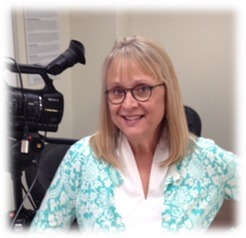As our attention spans shrivel, the way in which ideas, concepts, and new initiatives are presented couldn’t be under more pressure and scrutiny. Smart communicators work every day on their “elevator pitch,” finding ways to hone, abbreviate, and edit their presentations.
But it’s not just about keeping it short – otherwise anything under five minutes would be effective. It’s about making the best you have in the time you have to make a connection, to inspire, to convince, and to enchant.
It’s about winning your audience over in a compelling way, and as we well know, some do it better than others. While watching the first episode of Mad Men this year, it struck me that the entire season opens with a pitch – and it’s a brilliant one. As you’ll see in the video clip below, washed-up ad man Freddy Rumsen looks you right in the eye and makes you want to buy into his concept for an Accutron watch campaign:
>EMAIL RECIPIENTS: CLICK HERE TO WATCH MAD MEN VIDEO<
Now contrast that with a rambling presentation from a big-time new media CEO. Or should we say former Yahoo CEO Henrique de Castro who didn’t last a year at the company. Some analysts lay part of the blame on this speech where de Castro attempted to communicate his vision for Yahoo.
>EMAIL RECIPIENTS: CLICK HERE TO WATCH HENRIQUE De CASTRO’S VIDEO<
Some say de Castro’s presentation at the Interactive Advertising Bureau Leadership Meeting in 2013 wasn’t all that bad. But for a chief executive of a company struggling to find its way, you expect more. When you’re competing with the likes of Google, Apple, Amazon, and Netflix, you have to be better.
 That’s why more and more executives (and their companies) are hiring “talent coaches” to help create better, more effective presentations. Former radio music and talk personality (WKAR-FM, WRIF, KTRH) Sheila Sorvari is now providing these services to corporate leadership all over the country. She’s a contractor for a communications coaching firm and works with corporate types and managers who see the need to sharpen their skills.
That’s why more and more executives (and their companies) are hiring “talent coaches” to help create better, more effective presentations. Former radio music and talk personality (WKAR-FM, WRIF, KTRH) Sheila Sorvari is now providing these services to corporate leadership all over the country. She’s a contractor for a communications coaching firm and works with corporate types and managers who see the need to sharpen their skills.
I checked in with her to get a sense for where presentations go wrong, and what advice she gives to execs who often struggle to communicate their thoughts, philosophies, and goals.
Sheila points out that many presenters simply “turn their backs to the audience and read their wordy slides.” She notes the importance of eye contact, speaking from the heart, and not saying things you don’t believe yourself. That’s why Freddy Rumson connects.
It may sound like a cliché, but “transparency equals credibility in this young century. Authenticity is what we seek, in the products we buy and the people we meet.” And she asks, “Has it every really been otherwise?”
Sheila also notes that at the core “most people don’t have a vision or their vision is in numbers.” If you remember that famous quote from President Bush (41) about struggling with “that vision thing,” his admission was a key factor in what ultimately sunk his campaign for re-election.
Yes, we need those big ideas, those aspirational goals, and the vision to move our brands and our industries. But these days, the ways in which we convey and communicate them are often the difference maker between successfully connecting or ending up like Henrique de Castro.
Of course, he got a $58 million buyout when he was let go by Yahoo CEO Marissa Mayer. But that’s another blog post for another day.
- What To Do If Your Radio Station Goes Through A Midlife Crisis - April 25, 2025
- A 2020 Lesson?It Could All Be Gone In A Flash - April 24, 2025
- How AI Can Give Radio Personalities More…PERSONALITY - April 23, 2025




Leave a Reply